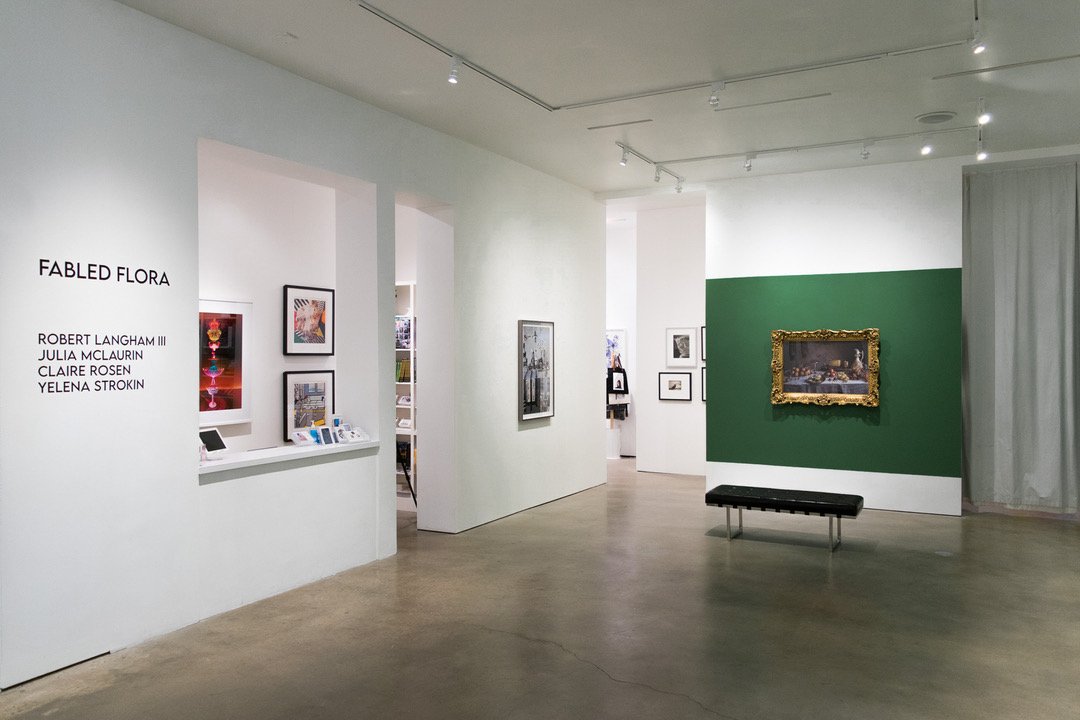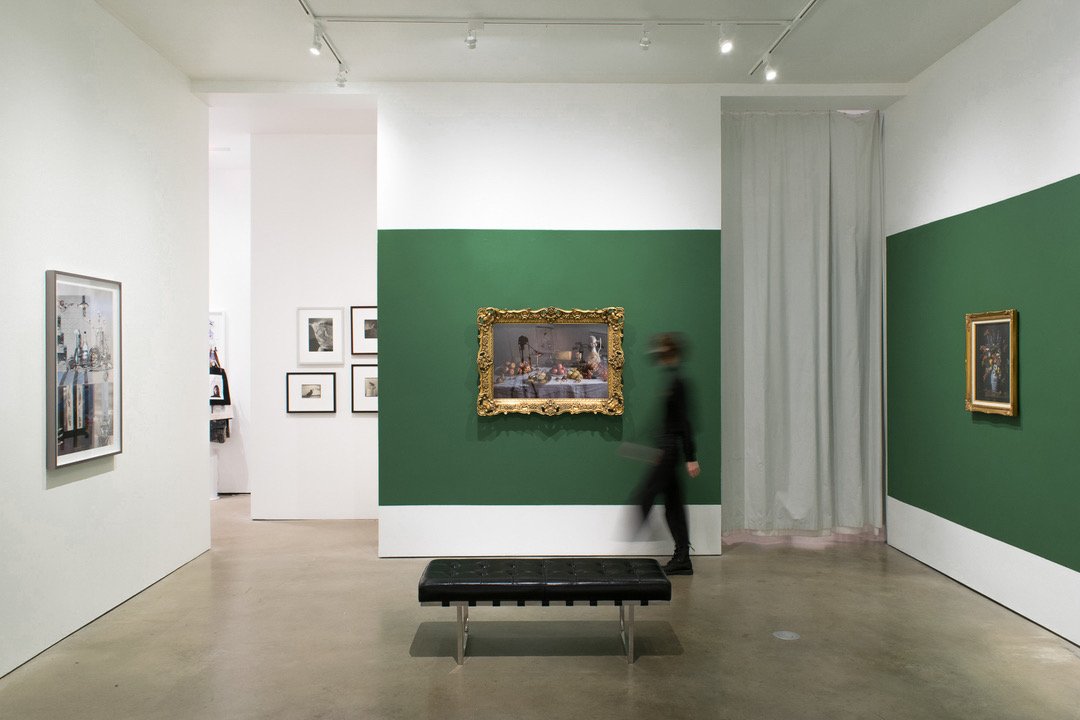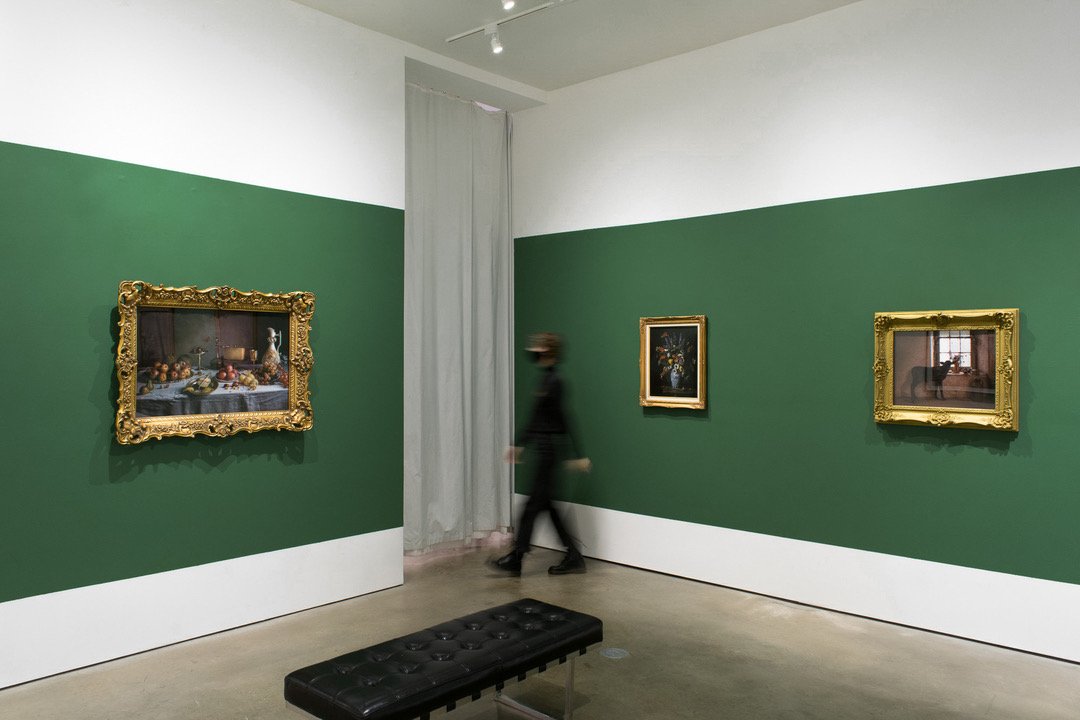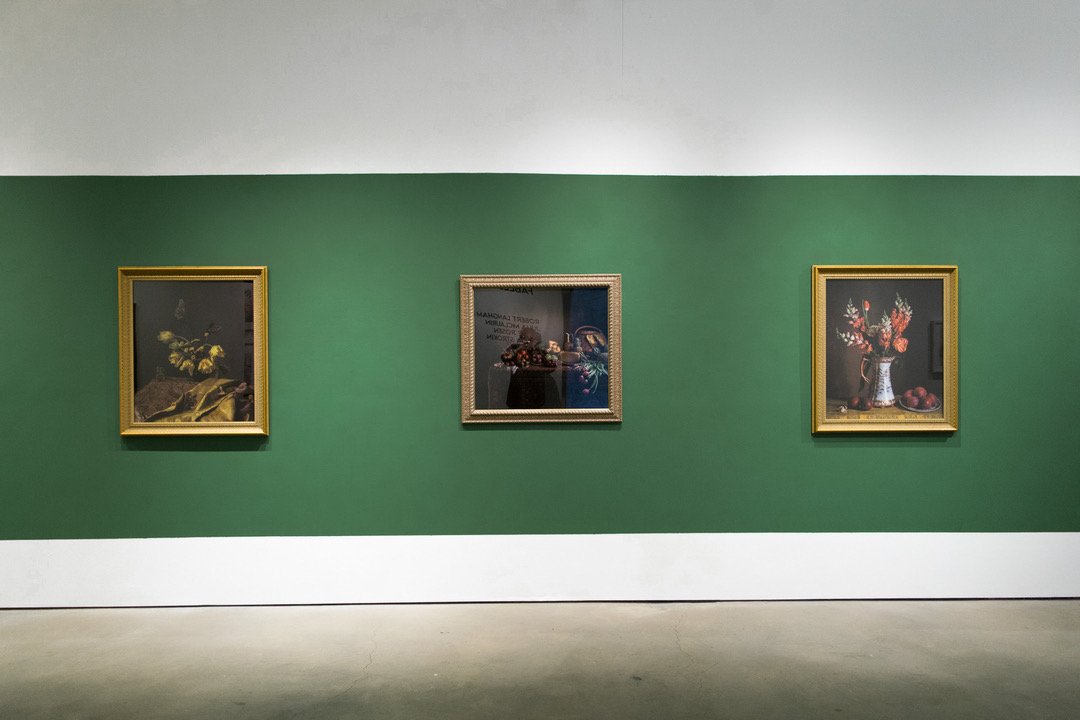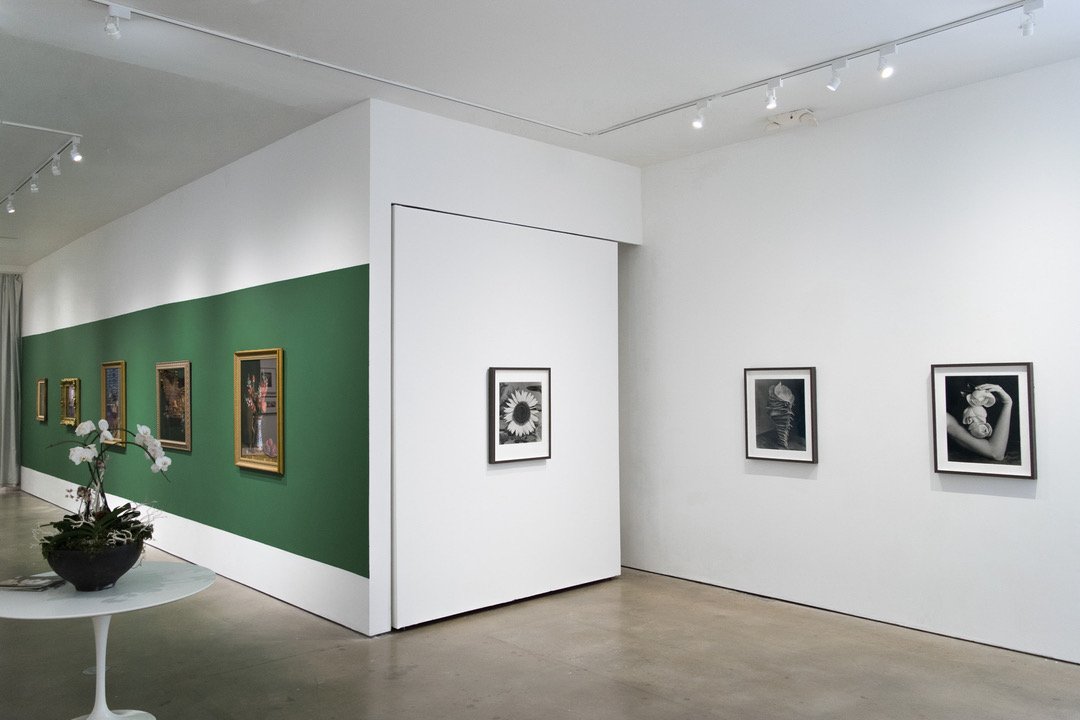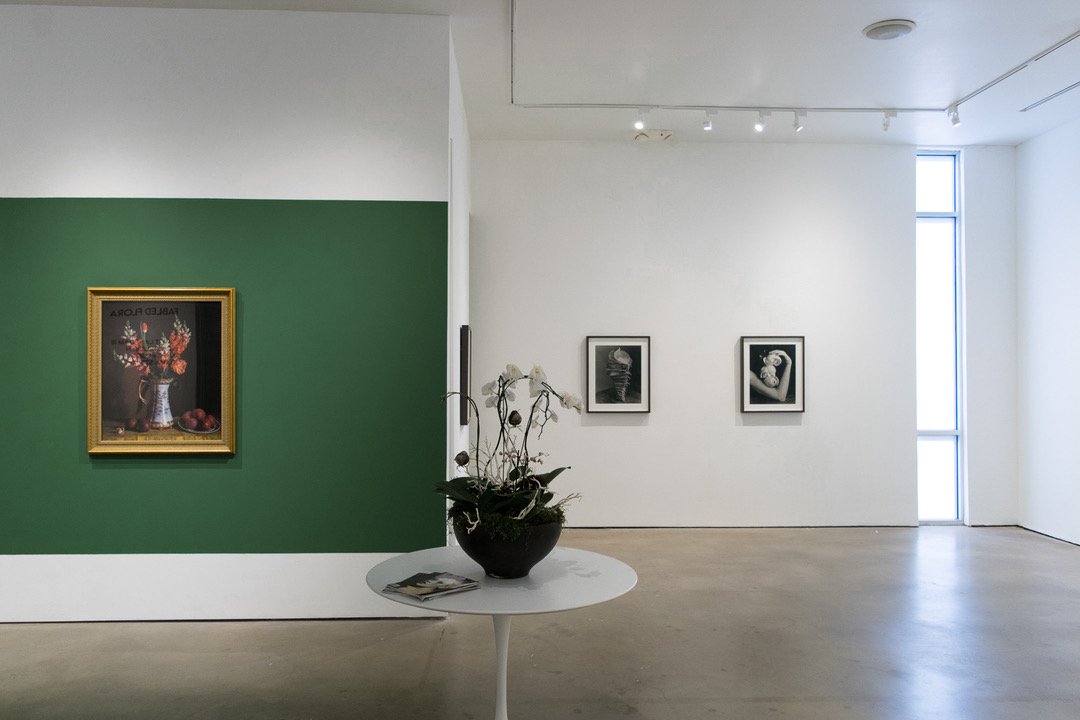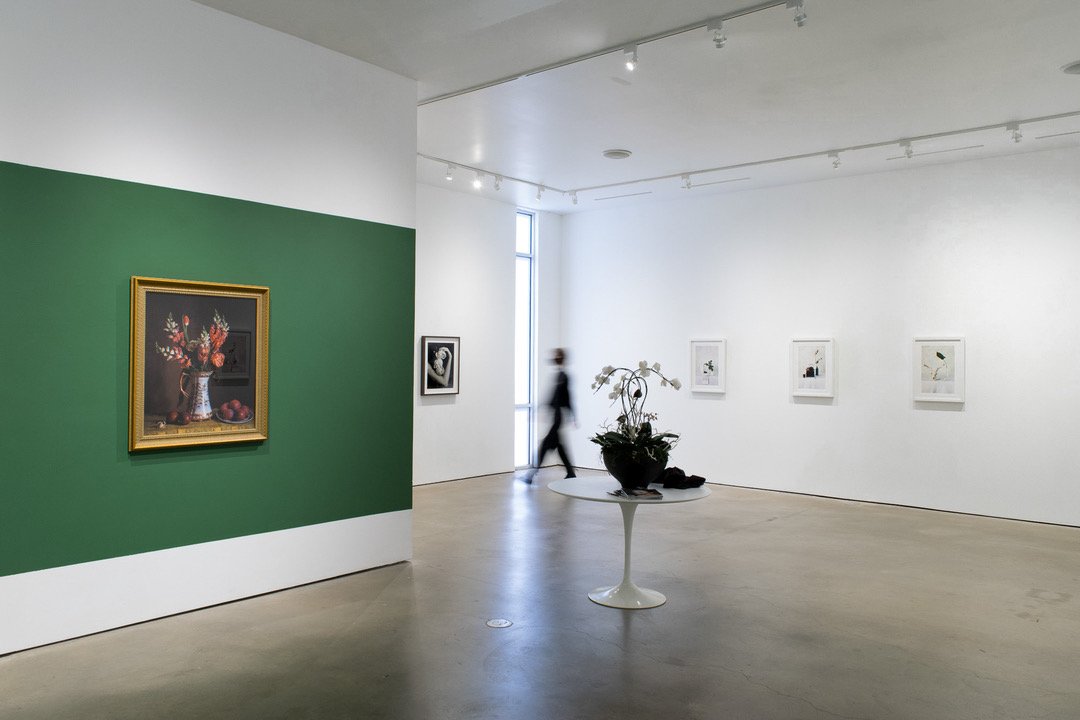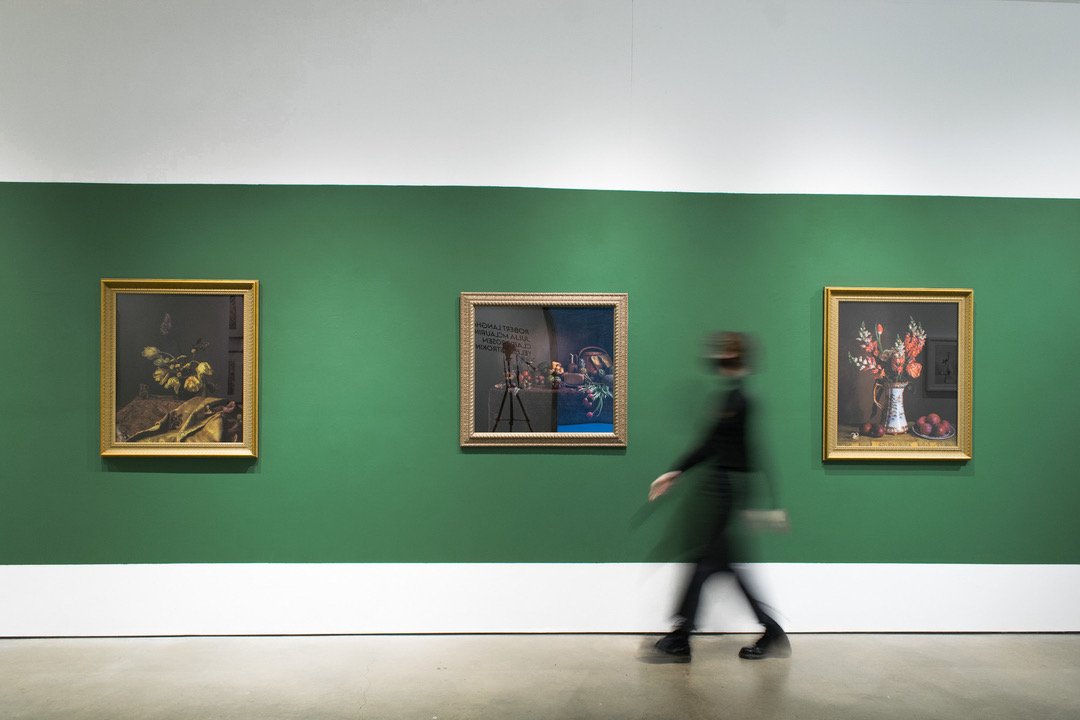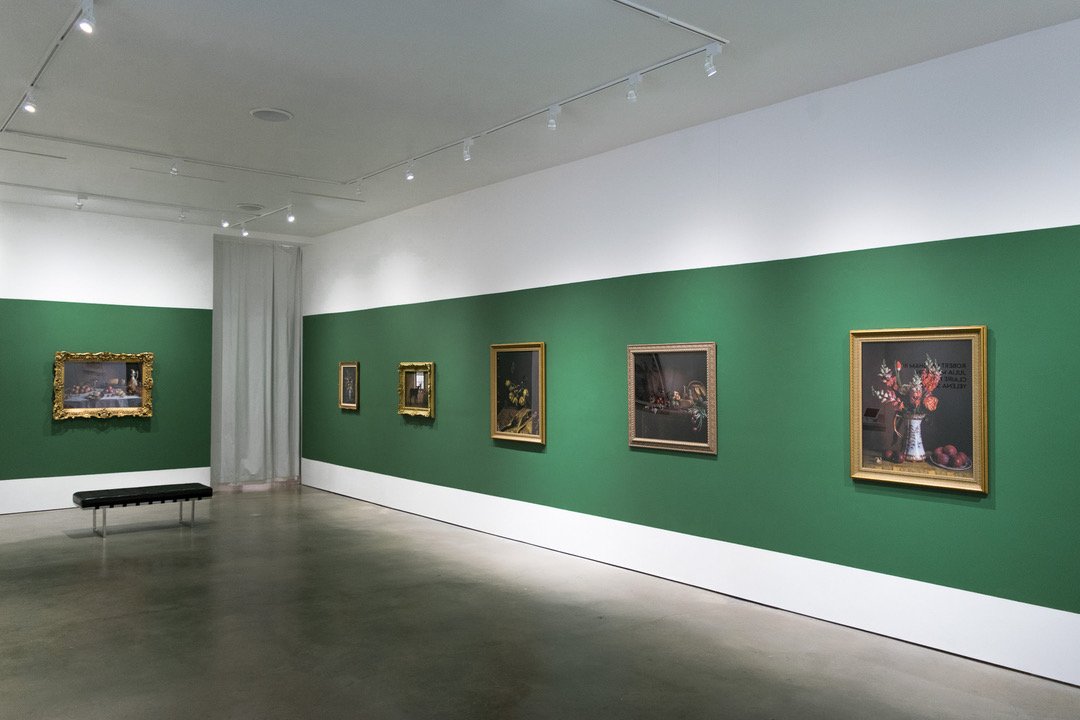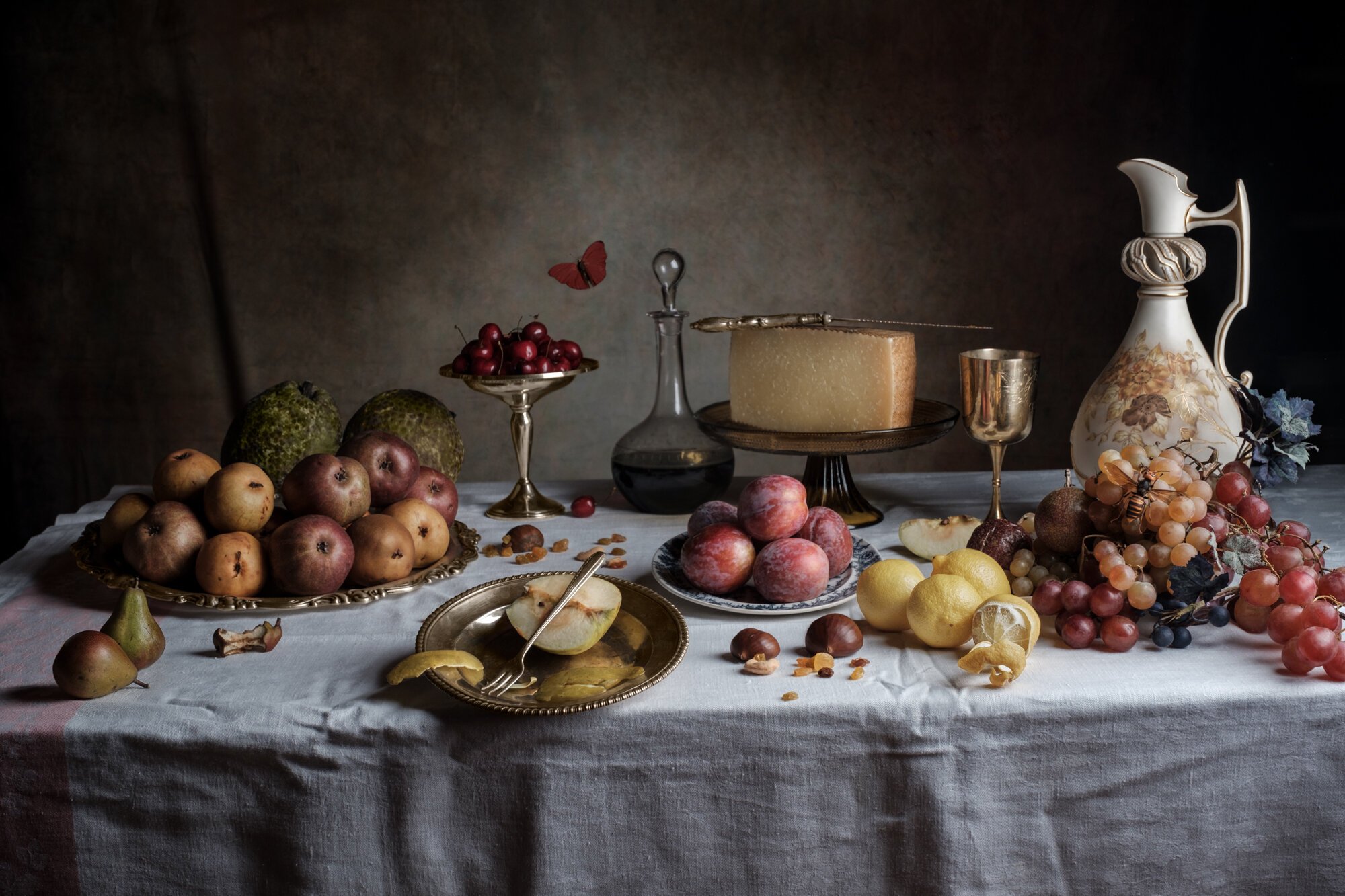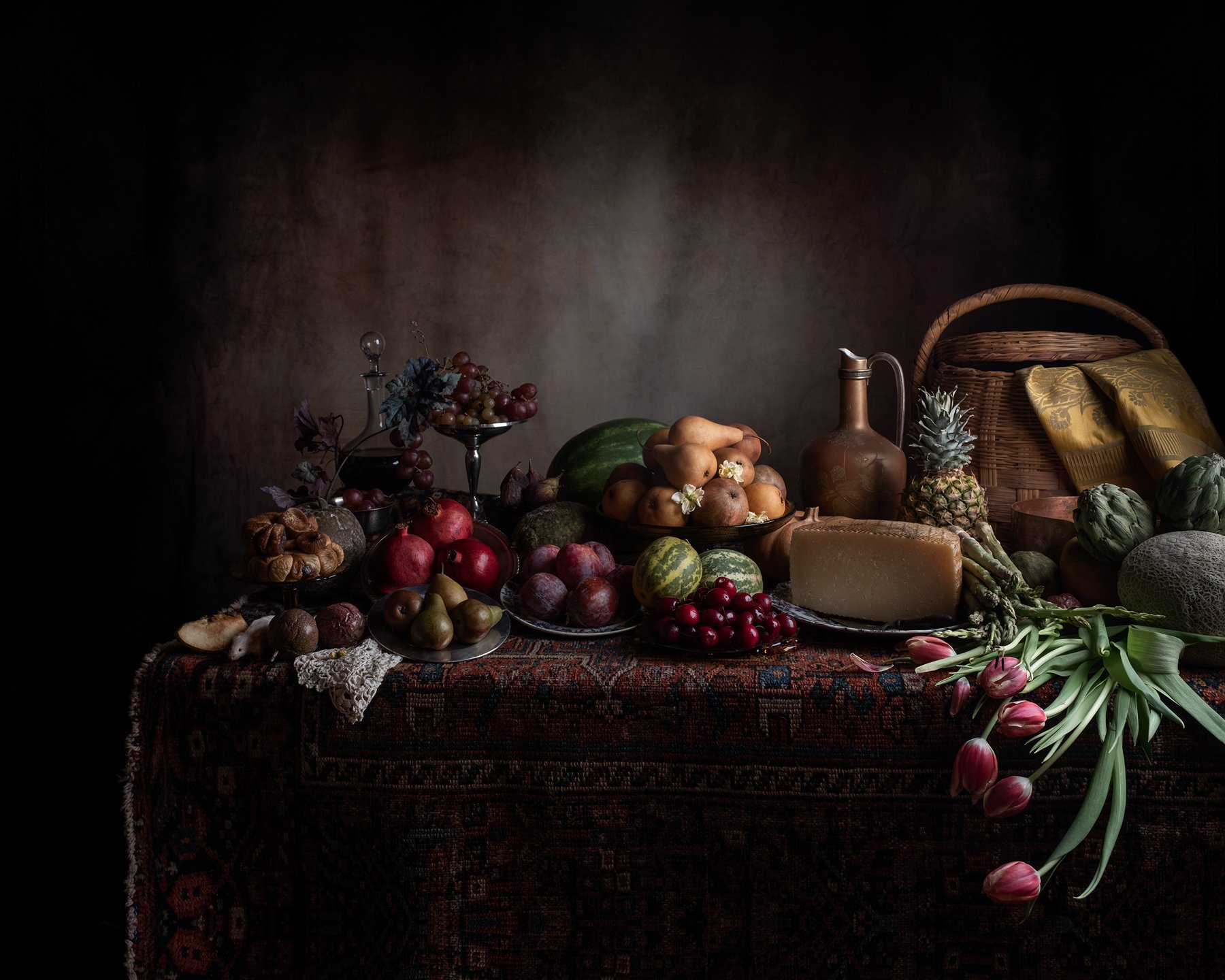Fabled Flora
4411 Montrose Boulevard Suite C Houston, TX 77006
Curated by Geoffrey Koslov & Bryn Larsen
Fabled Flora, a group exhibition blooming with lush still life works from contemporary photographers Yelena Strokin, Robert Langham III, Claire Rosen, and Julia McLaurin. United by a love of precise compositions and delicate light, curated selections from these artists invoke a modern revival of traditional still life scenes. All are invited to join in this visual reprieve of storied blooms and meticulously-orchestrated symbolism. Fabled Flora features brand new works from longtime gallery artists Langham, Rosen, and McLaurin, and marks Strokin's Foto Relevance debut.
ARTWORK FEATURED IN EXHIBIT
ARTIST TALK
CURATOR ESSAY
A “still life,” whether a painting, photograph or a multimedia creation, brings to mind an assembly of flowers, bowls, bottles, and other objects, natural or man-made, arranged on some type of table surface. What constitutes a “still life” is broad and flexible with no defined rules. We think we will know it when we see it, to paraphrase an expression. With that in mind, a more serious still life work goes beyond a random assemblage of objects. It is a directed purposeful creation that conveys messages through a selection of objects imbued with symbolism from custom or religious association. Looking at the still life photography of Claire Rosen, Yelena Strokin, Robert Langham III, and Julia McLaurin in the exhibition “Fabled Flora,” we examine four different approaches to this art genre that literally span centuries of creative effort.
Many descriptive terms are used for the still life genre. To appreciate a still life image carefully crafted and any instilled message, we have to appreciate the seriousness of the term “still life” itself. In French, “nature morte,” and in Dutch, “stilleven,” both reference dead nature. The Latin term “vanitas,” literally vanity, references the transience of life and the conceit of earthly physical possessions and pleasures. “Memento Mori,” also Latin, is the sobering expression—remember that you must die. These are all branches of a common root for “still life” that, by genre alone, asks that we appreciate and take life seriously: what we do with, in and during our lifetime.
Fables are like still life art. A fable is a fictitious story styled to teach a moral lesson as a visual vehicle for teaching and preaching. Extending beyond the term “still life,” we acknowledge that objects, whether man-made or natural, have meaning. Symbolism in art is not new. Composition is a key element in the dialogue for the image. Despite weighty and intellectual description, a still life does allow us to enjoy life of the moment and the modest pleasure in the beauty of objects. The arrangement by the artist, and the framing within the image, is key to how a fable is told. That meaning extends beyond a literal explanation of what the objects may appear to reference. Yelena Strokin writes that “The color white projects purity, cleanliness, and neutrality…White is a traditional color worn by brides in the western world and some other countries, but in China and parts of Africa, white is the color of mourning. The egg is a symbol of the birth, but a white skull represents death.”
Claire Rosen creates a classic feeling still life that is easily and comfortably approachable, but still complex in its message(s). Given objects have an importance beyond their literal existence in a parable. The arrangement of the objects creates a conversation within the image. Claire Rosen commented: “These still life images aim not to grab your attention, but hold your attention, to reflect the full scope of human experience, the beauty and the darkness. The viewer is invited to contemplate the complexity of life rather than escape from it.”
In “Rattlesnake and Tulips,” the presence and position of the snake is critical to the appreciation of the fable within this work. Rosen explained: “The snake is one of the oldest symbols in human mythology and prevalent through the entire canon of art history. It even represents creative life force—they are symbols of rebirth, transformation, immortality, and healing.” The rattlesnake, mouth wide open with fangs threatening, is scarily visible. Snakes can simultaneously represent evil and Satan, fertility and creation of life, a fall from grace, and transformation, especially if shown molting away their skin. With Rosen, where the snake is emerging from behind a pot, it may symbolize Satan emerging to strike. The moth in the image may symbolize the fragility and natural order of life, implied perhaps by how delicately a moth must be held. Rosen goes on to explain: “Light and darkness are ubiquitous in religious morality as representatives of good and evil, of the divine and the demonic. Traditionally, references to light and the absence of light have symbolized the human imperative to seek a higher power. … The tulip, one of the first flowers to welcome us out of the darkness of winter each spring, lives by the rhythms of the sun, always stretching towards the light and wilting in the darkness. … Tulips are associated with fleeting beauty. … Like the tulip, the Cecropia moths, mysterious nocturnal beauties, fly through the night and are drawn to any illumination in the darkness, as in the well-worn adage a ‘moth to a flame.’ … Snakes are powerful creative symbols, associated with deep, intrinsic wisdom. They bring the light of knowledge, and the darkness of the fall from grace. On the opposite corner of the frame, the Stag Beetle (Lucanas Cervus) appears, commonly used in still lives to depict Christ.” In a BBC Culture article by Cath Pound (March 3, 2018), she comments that cherries and strawberries represent the soul of men, dragonflies, the devil; and skulls and hour-glasses are reminders that life will end, that possessions and wealth do not matter, or prolonged life or quality living. In Rosen’s image, the arrangement is placed on a thick and full looking rich gold fabric. The fabric may be a visual for the conceit of those fortunate to have wealth and good fortune. Given this composition, should the viewer take comfort and be alerted? Or, can a hopeful message emerge?
When visiting the exhibition, take note that Rosen also shows us two classic still life arrangements that demonstrate how composition of similar objects can change the story line. In “Still Life Table No. 1534,” we see a sumptuous full table of fruits, vegetables, cheese, and flowers, all whole, in place and untouched. Image 1534 is in contrast to “After Severin Roesen Still Life No. 0305.” In Image no. 0305, the frame has more open space. We see more of the table top, presumably because items have been removed, consumed or taken away. Knowing something about Severin Roesen reveals part of what might be the artist’s storytelling. Roesen was an American still life painter of the mid-nineteenth center who painted full, bountiful and lush images. Claire Rosen comments that “[t]he more opulent table features an array of exotic acquisitions from every season; lemons, pineapples, melons, dates and figs were all used as status symbols representing luxury and growing global trade. A small discrete mouse peaks out of the shadows to symbolize the danger of intemperance as the pomegranates call out to the underworld. In the “Still Life Table No. 1015,” the rotting pear core speaks to decay, the butterfly is a representation of the soul and the wasp a symbol of the ecosystem and pollinators needed to produce such fruit.” In some cultures the wasp can represent evolution and a control over life, but that just wishing or wanting something to happen is not enough. Here, one composition is much more dense with content than the other. An interesting dialogue is created by contrasting these two works that can be taken as a cautionary fable.
In stark contrast are Yelena Strokin’s minimalist compositions. In “Off White #6,” while the skull is symbolic of death, it does not appear sinister, depressing, or distracting. It makes a contribution to the overall visual. The arrangement suggests a celebration of life more than a somber reflection on behavior and death. In Mexico, the celebration of “Dia de los Muertos” (Day of the Dead), families will gather and honor the deceased. Looking at a symbol of life passing is not always somber and sad, but a time to remember and reflect. Lighting defines a somber serious mood while a brightly lit scene brings the same sense of expectation as a rising sun on a brightly lit day. An egg might represent life, spring, and renewal. In her other works, she places into the arrangement fruit that is fresh and vibrant. She commented: “[An] image with an apple has also the meaning: you see the red apple on a plate perfect and looking good, but I got it from the store, it’s full of wax and pesticides. The green apple on a branch is from my garden, it does not look as perfect as [the] first one, but it’s full of love and sunshine.” With elegant clarity, Strokin has embraced “memento mori,” the circular pattern of life and optimism for new life.
In Robert Langham III’s “Triple Magnolias” and Julia McLaurin’s “The Silver Lining is Duct Tape” mixed-media installation, the artists confront us with still life arrangement and style very different from Rosen and Strokin. The still life “Triple Magnolias” emerges from a fanciful series Langham calls “Magic and Logic” that is meant to visually and mentally challenge the observer. Langham commented: “Almost all of Magic & Logic are images of the imagination. You actually can’t see them, only visualize them, until the negative comes out of the fixer. No painter would ever imagine them. They require a camera to be seen.” Everything about Julia McLaurin’s work sheds tradition and traditional expectation. McLaurin’s image, part of her “American Still Life” series, brings us a very modern composition imbuing typically mundane objects with the high symbolism of the traditional still life genre, yet in a playful manner. Both Langham and McLaurin challenge us to think about what we see when objects are placed in an unfamiliar context. While Rosen and Strokin study the symbolism in traditional objects, Langham and McLaurin remove our preconceived visual references and reimagine them. Whether it is object symbolism or the visual context in which objects are placed, each still life emits a challenge to investigate meaning.
In “Triple Magnolia,” Langham has positioned a bent arm holding the delicately placed flowers. The image is also done in black & white rather than in color. As an artist, Langham works with film and traditional techniques of a “wet darkroom” to create his prints, a disappearing art form. Without the distraction of color, our full attention is then focused on this unusual embrace of beauty in nature. Why magnolias? In art and literature, a magnolia may represent longevity and perseverance, love and beauty. The arm rests on some sort of surface with an old torn cloth covering its surface. This runs contrary to what we might expect in a more traditional still life, but it forces us to view and appreciate the flowers. It is almost as if we are told we just embrace nature for what it is, and that we do not need the support of wealth and luxury to carry our enjoyment. The arm also appears to belong to a rather young person. Langham could have chosen the arm of a clearly older person, that might have suggested years of wisdom in appreciating our fragile relationship with our environment. Yet, we see the fingernails look very clean and manicured, so this not a person that does manual labor or works heavily with the earth. This seems contradictory to what direction we might take in thinking about what we see. Are the delicate fingers to suggest that if we care about our own self and presentation, we can better share, and appreciate caring for other parts of our surroundings? It may be that it is our youth that will embrace and hold nature dear, and more delicately nurture a past, present and future heritage.
Julia McLaurin, in “The Silver Lining is Duct Tape,” brings us a very modern composition within the “Fabled Flora” exhibition. There are three dominant themes: the colors silver and blue, fish and duct tape. Color is as much a part of the fable in a still life as the objects themselves. Silver conveys a message of peace and serenity. McLaurin also added shades of blue across the table surface, and in the sky and cloud labeled bottle set in the center of the image. Blue conveys peace and calm, but also heaven, spirituality; or, more darkly in some cultures, defeat and trouble. Fish often are a symbol of religious life and belief. However, all these fish are out of the water. We see cans of fish (sardines or anchovies?) canned, dead, and open to be consumed. If water itself represents life, then fish positioned out of water may mean our spirituality is out of sync or religious tradition is being challenged? The cotton stalk blossoms in the vase harmonize with flora in a traditional still life, and are embedded in the southern culture in the United States. This in itself is interesting, as objects might be misunderstood because of a different culture and history. In some cultures the cotton blossom is the promise of wealth and well-being or the love for a mother. Cotton blossoms can also be cloud-like in the thickness of their bloom and softness which reference the clouds in the image. Duct tape is a modern invention to hold things together that are broken or need rebinding. In the image, few objects seem elegant, expensive or valuable except for an elegant tea (or coffee) serving piece in the lower right corner. This contrasts with all the unlabeled silver cans. In the upper left corner, we see a hand holding scissors reaching in to cut something, possibly a fish. If the fish represent religion, does this imply cutting away our religious beliefs, or that we are losing our faith? It is as if reliance on religious belief should be challenged. Should we hold a reliance on faith to give us peace? Do we get nothing from the cans or boxes that hold possessions or food? It is unclear if the artist is thinking about faith. Religion has been a part of the still life genre for centuries, and perhaps that is why we see it seep into these images.
Photography, like painting, used the still life as an exercise for demonstrating a skillful reproduction of a staged scene. As craftsmanship progressed, some artists transitioned to the incorporation of mystery, message and symbolism. “Fabled Flora” frames four different fanciful approaches to still life composition that shift from traditional to contemporary, with imbedded meaning. The visual image becomes a mental conversation to remind us of our mortality, the transience of life, the conceit of excess, metamorphosis and transformation. Objects, like flora, skulls, insects, reptiles, fruit, animals, and man-made containers, speak. The objects befit words and meaning. In addition to symbolism, there is composition. As purposefully and thoughtfully arranged, the visual becomes a story, without words. The quality of the image may rest on how clear the visual statement is, or whether it is a vague opaque jumble of unrelated objects. Despite the wide variety of visual techniques used, the different lighting, the different staging, arrangement and presentation, these artists have created their own visual style of telling a fable. Appreciating visual clues and symbolism, we separate a merely decorative arrangement (created only for visual enjoyment), from serious work with a thoughtful underlying message to be sought out, colored by our own tradition, culture and religion that has stained them with significance. In “Fabled Flora,” each of these artists have staged works that will reward us with a fable worth seeing.
Essay by Geoffrey Koslov

